Kinross House sits in a private estate of over 100 acres, located on the eastern side of the town of Kinross, just 30 minutes from Edinburgh. The mighty iron gates open onto the long private tree-lined driveway, as Kinross House appears majestically in the distance. The centre of the house sits on an axis from the entrance gates to the west through to Lochleven Castle at the eastern most point, with the entire estate designed around this focus.
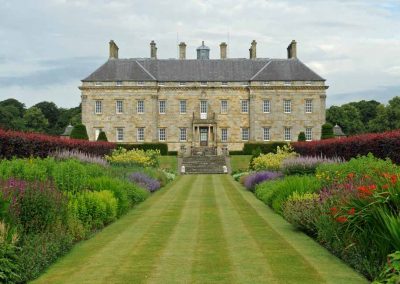
Kinross House is without doubt the most important early classical mansion in Scotland, and is truly one of the most beautiful houses to have ever been created, with magnificent formal gardens cascading towards the private Loch. The Robinson Crusoe author Daniel Defoe described the house as “the most beautiful and regular piece of architecture in Scotland, perhaps in all of Britain”, a vision shared by all those who have visited this unique and special home.
Kinross House as it stands today was built in 1685 by Sir William Bruce, and was the first neo-classical palladium house created in Scotland. The house was considered to be highly avant-garde at the time, a dramatic departure from the battlements and turrets that dominated the Scottish landscape in the 17th century. As peace was developing at last, Kinross House with its harmony, balance and precision, represented a new era of hope and prosperity for Scotland.

The current owners acquired the property in 2011, and began a unique restoration project and a real labour of love with a team of specialists, carefully selected to restore Kinross House to its former glory; a testament to the vision of Sir William Bruce. For the very first time, Kinross House has opened its doors, offering a select few the chance to walk in the footsteps of royalty and historical figures.
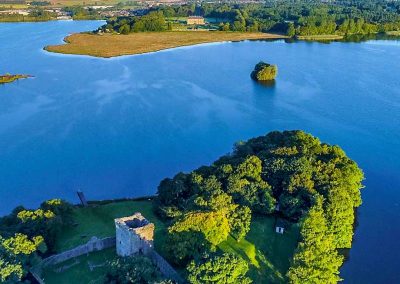
Stay at Kinross House and enjoy complete exclusivity of this magical place; lose yourself in the tranquillity of the gardens, take a boat across the Loch to explore your very own island, or simply soak in the amazing atmosphere and grandeur of this most special of places.
As a guest of the Kinross Estate, enjoy the highest standards of comfort, impeccable service and personal attention to detail; in a warm and relaxed atmosphere in this truly exceptional home. Kinross House is only available on an exclusive use basis, meaning you and your guests can enjoy the privacy and seclusion of your own private estate. The house comes fully staffed for your comfort, with exceptional standards of cuisine and a dedicated concierge and host service to ensure every aspect of your stay is perfect.
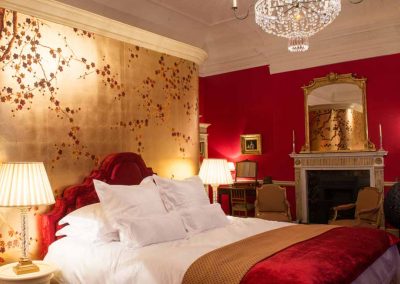
The interiors are truly breath taking, with rich fabrics, intricate detailing and exquisite furnishings throughout. Kinross House offers a wealth of antiques and fine art, collected from all over the world throughout the centuries and creating a unique and special experience.
The quintessentially Scottish atmosphere and authentic original features, columns and floors have been enhanced and preserved, yet the pristine interiors and state of the art amenities mean this is a luxury home for modern times too.

The magnificent entrance hall leads through to the formal reception rooms, all linked to create a seamless space for entertaining. The vast windows give stunning views over the beautiful grounds towards the Loch and the hills beyond, with steps from the elegant Garden Room leading directly down to the gardens with a breath taking vista over the Loch and Castle.
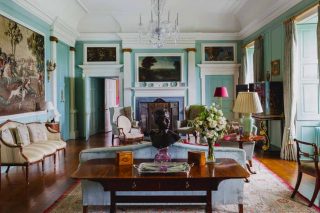
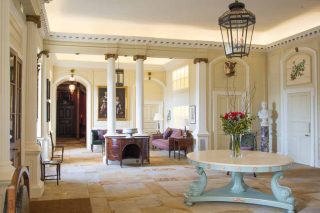
The Ladies’ and Gentlemen’s Drawing Rooms offer wonderful spaces to entertain guests, relax in front of the roaring log fire, or savour conversation long into the night with friends. Each room has been individually designed and offers a unique glimpse into the style and elegance of 17th century living.
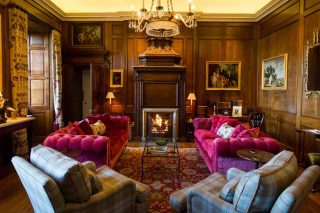
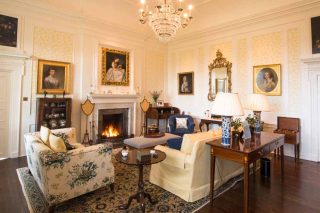
The Little Sitting Room and Library are the ideal places to get away from it all, immerse yourself in a good book, or soak in the wonderful views.
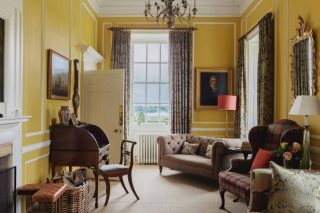
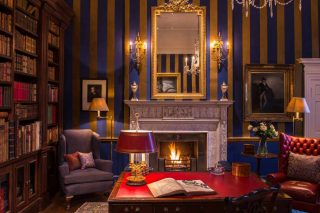
The Dining Room offers a beautiful setting for intimate dinners or opulent banquets, with seating for up to 34 and a stunning painted ceiling. Kinross House offers various beautiful dining options, with space for up to 100 guests in the magnificent Grand Salon, and up to 60 guests can be seated in the Coach House’s baronial dining room with floor to ceiling windows opening onto the delightful courtyard.
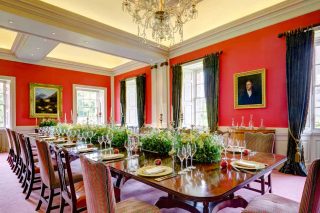
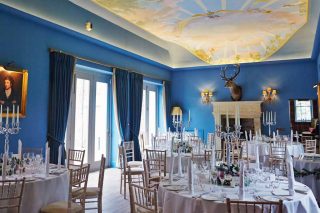
The lavish Grand Salon was inspired by the French design of the time, and was the first of its kind created in Scotland. The Grand Salon is reached via the magnificent staircase and offers a truly spectacular setting for functions with vibrant bursts of reds, greens and golds, with original furnishings restored to their former glory.
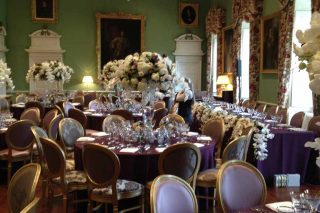
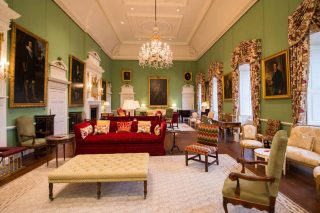
The stunning grounds are a wonderful setting for larger events, with space for up to 450 guests to be seated for formal dining in a marquee in the grounds. There are electricity, water and Wi-Fi points within the grounds, and the professional kitchen at Kinross House can provide up to 400 covers.
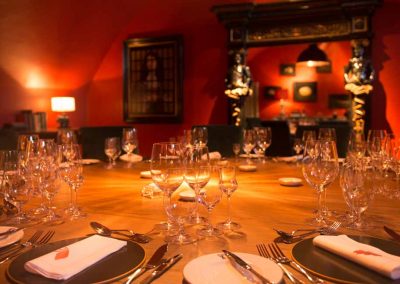
For a more intimate dining experience of up to 12, enjoy the delights of the Chef’s Table, where your chef can guide you on a journey of gastronomic discovery using the very best locally sourced ingredients.
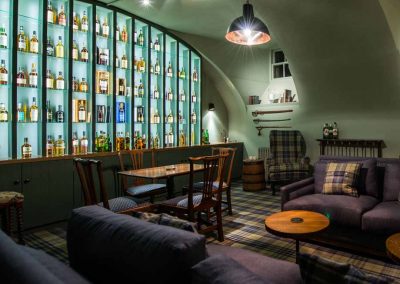
The Whisky Library offers an extensive selection of sensational whiskies, and offers the perfect place to relax and enjoy one of Scotland’s finest assets.
There are 14 feature bedrooms at Kinross House and a further 10 bedrooms in the Coach House, each with a luxurious en-suite bathroom. The spacious bedrooms all offer the highest standard of comfort, with luxurious bed linen, supremely comfortable mattresses, soft fluffy towels and bathrobes and slippers.
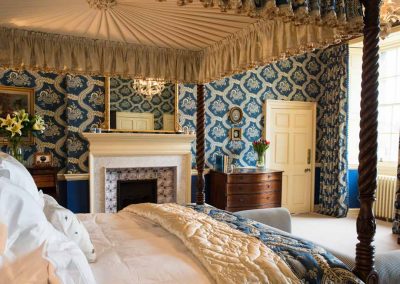
All of the bedrooms offer spectacular views of the grounds and gardens, with the State Bedrooms being a particularly exceptional experience with stunning views across the Loch. The luxurious bathrooms are traditionally styled yet offer every modern convenience, with powerful showers, plentiful hot water and luxury toiletries.
There are 12 bedrooms fixed as doubles with king or super king size beds, and 2 bedrooms that can be arranged as either twin beds or a super king bed. A lift services the ground floor and first floor providing easy access.
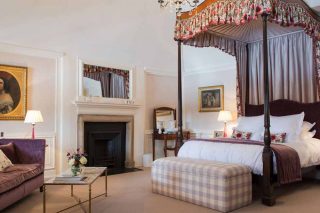

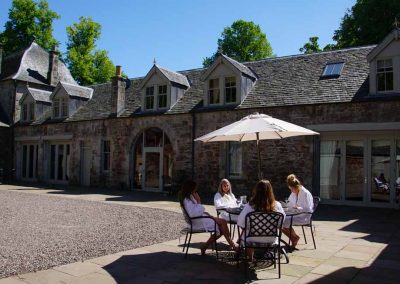
The Coach House is just 2 minutes’ walk from the main house and was once the original stable block dating back to 1680. Today it has been beautifully renovated to offer an additional 10 ensuite bedrooms, along with a stunning double height dining room to seat up to 60, a beautiful Tartan bar with seating and a library, and of course the wonderful spa.
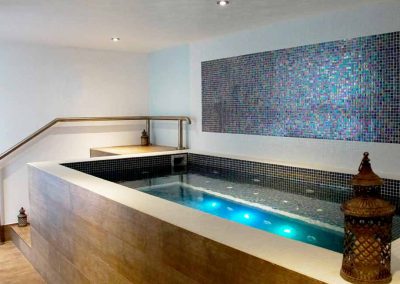
Guests from the public can book in for treatments or you can take exclusivity of the spa with its hydrotherapy pool, sauna, relaxation room, nail bar and three treatment rooms for an additional cost. There is a lovely courtyard ideal for al fresco dining and gourmet BBQs.
The grounds extend to over 100 acres, with beautiful formal gardens, manicured lawns, walled gardens and meadows cascading towards Loch Leven. The gardens were one of Bruce’s masterpieces, the intricacy of the design and geometric patterns are clearly visible today, with a sense of harmony and balance throughout the gardens.

In recent years the grounds have been sensitively restored and updated, adding definition to the geometric order whilst maintaining harmony with the natural surroundings. There are over 10,000 species of plants and trees within the estate, and there has also been the reintroduction of the noble craft of fruit cultivation. The gardens at Kinross House are widely regarded as one of the finest formal gardens in the whole of Scotland.
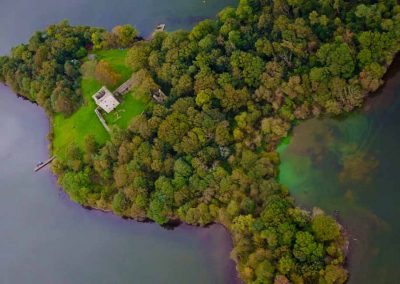
Yet the beauty of the Kinross Estate extends well beyond the formal gardens, with breath taking views across Loch Leven and the Castle, and rugged beauty of the Scottish lowlands beyond. The Loch itself is a designated nature reserve, and Castle Island houses Lochleven Castle, one of the most important medieval castles in Scotland. Visit the castle for yourself and relive Scottish history, following in the footsteps of King Robert II, Sir William Wallace, Mary Queen of Scots, Robert the Bruce and John Knox.
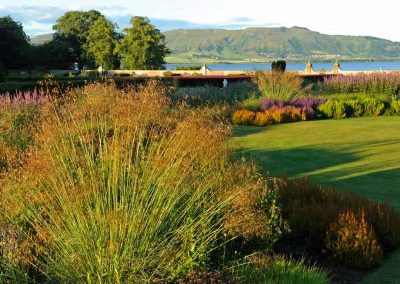
Scotland offers some of the best opportunities for traditional country pursuits anywhere in the UK, and the area surrounding Kinross House is no exception. We can arrange a wide range of fabulous outdoor activities both in the estate and surrounding area, including fishing, shooting, stalking, spa treatments, golf at the nearby courses of Gleneagles and St Andrews and motor sport at the Knockhill Circuit.
Kinross House offers all of the luxury and service of the world’s greatest hotels, yet a stay here is a world apart. Enjoy the flexibility and freedom of the entire estate, with guaranteed privacy and the discreet, undivided attention of a hand-picked team of staff.

The History

Kinross House was built in 1685 by Sir William Bruce, driven by his desire to create a beautiful and romantic vision for the future. The house is a perfect example of a classical villa, drawing inspiration from the romantic landscapes of Renaissance Italy, and is the epitome of civilised architecture.

Bruce began life in the merchant navy, slowly climbing the social standings to become the Surveyor and Master of Works to King Charles II, with his first appointment to be the redesign of the Royal Palace of Holyroodhouse in Edinburgh. Bruce developed his love of classical architecture and drew inspiration from his many trips to the continent as he spent the next 25 years redesigning some of the most prestigious properties in Scotland.

Bruce was an ambitious man and had aspirations to become a Lord, and for this he would need an estate befitting his social stature. The Kinross Estate was previously owned by the Douglas family (Earls of Morton), and when the 9th Earl of Morton suffered with financial difficulties, Bruce seized the opportunity to pay the Earl’s debts and acquired the Kinross Estate. Work began on the house almost immediately, and quickly became the most expensive house in the whole of Scotland, with master stonemasons and master craftsman brought in from all over the world to create Bruce’s masterpiece.

Everything about Kinross House had been carefully calculated with meticulous attention to detail. From the precision and regularity of the stonework to the cool clean lines, this was a house fit for royalty and built to last an eternity, a home for Bruce to found his dynasty.

The house contained all of the latest trends from the continent, a move towards comfort, convenience and above all privacy, with separate stairwells and mezzanine levels for servants. The house was created to follow a processional route, a reflection of the social standing of guests frequenting the house. The magnificent Grand Salon on the first floor was the gathering place for the social glitterati of the day, a lavish room with ornate detailing and fabulous high ceilings. From here, a door leads through to the State Drawing Room, a room reserved for those privileged to be granted access. Deeper still, the Ante Room was for those only of the highest social echelons, a privileged few who were received by Bruce in his bed chamber.

Yet for all the modern features and avant-garde ideas, Kinross House remains very much a testament to the rich history and noble pedigree of the Estate, with the entire house and gardens focused on the ancient Loch Leven Castle, where Mary Queen of Scots was imprisoned in 1567 and forced to abdicate the throne in favour of her son. The precision of the design and architecture is plain to see, an imaginary straight line running from the western entrance gates, along the driveway, through the centre of the house, through the gardens, and across the Loch straight to the Castle at the eastern most point of the estate.

Following Sir William Bruce’s demise, Kinross became the property of the Montgomery family, who have meticulously maintained Kinross House throughout the years. The stunning formal gardens had become a wilderness until Sir Basil Montgomery inherited the house in 1902 and began restoring the gardens to their former glory. The gardens at Kinross House are world renowned for their beauty and design, with over 10,000 species of plants and trees from all over the world.

Today, there are beautiful terraces, sweeping lawns and magnificent fountains, with formal gardens and parterres leading towards the wild meadows and woodland beyond. The Estate encompasses some 100 acres along with the 14 sq km Loch Leven (the largest Loch in the Scottish Lowlands), Loch Leven Island and Castle. The Estate was declared a National Nature Reserve in 1964, a reflection of the outstanding natural beauty of the surrounding area.

Lochleven Castle is amongst the most important medieval castles in Scotland, created in 1257. The Castle featured prominently in the Scottish Wars of Independence, held by the English during the first war but recaptured by the famous forces of Sir William Wallace before the end of the 13th century, one of only five castles held by the Scots at this time. Lochleven Castle has hosted royalty, with King Robert II visiting in 1369 and Mary Queen of Scots first visiting in 1561. Mary was later imprisoned for 11 months at the Castle in 1567 and forced to abdicate the throne, and later dramatically escaped across the Loch and went into exile in England. The provenance of Lochleven Castle was clearly appreciated by Bruce, who made the Castle his focal point for the entire design of Kinross House and gardens.



